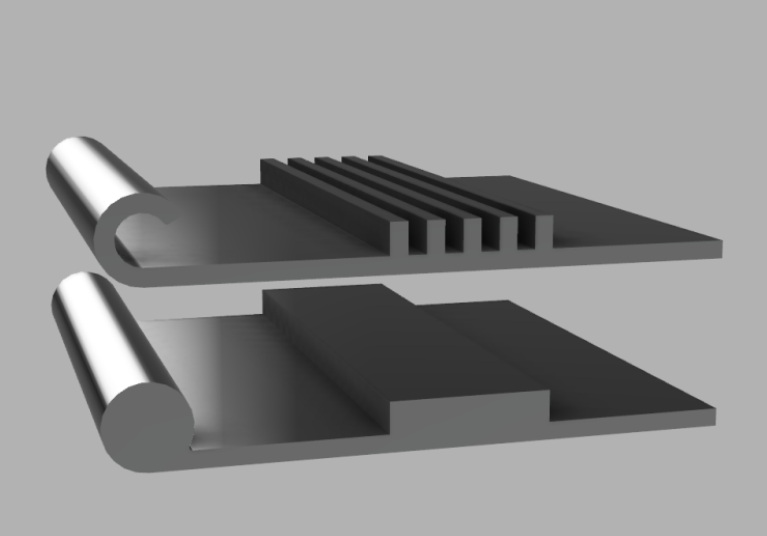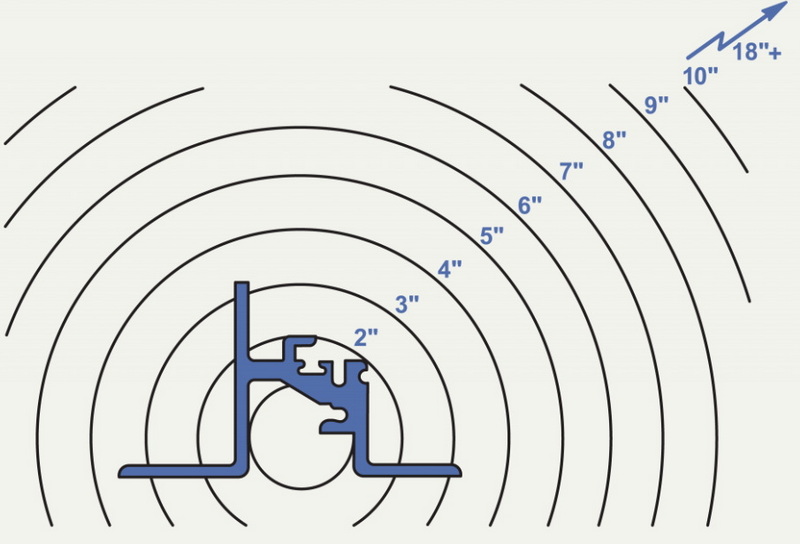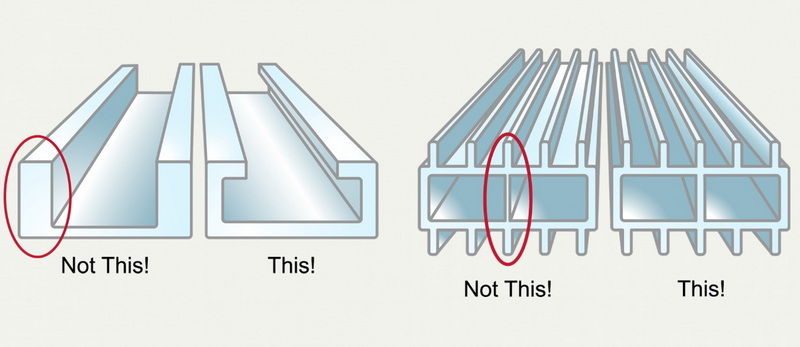Content Menu
● Understanding Aluminum Extrusion
● Key Design Considerations
● Best Practices for Aluminum Extrusion Design
>> 1. Optimize Profile Configuration
>> 2. Streamline Transitions
>> 3. Enhance Visual Surfaces
>> 4. Consider Assembly and Fabrication
● Common Challenges in Aluminum Extrusion Design
● Advanced Techniques in Aluminum Extrusion Design
>> 1. Finite Element Analysis (FEA)
>> 2. Design for Manufacturability (DFM)
>> 3. Sustainability Considerations
● Case Studies in Successful Aluminum Extrusion Design
>> 1. Automotive Industry Innovations
>> 2. Architectural Applications
● Conclusion
● FAQ
>> 1. What are the most common alloys used in aluminum extrusion?
>> 2. How does wall thickness affect aluminum extrusion?
>> 3. What are some effective surface finishing options for extruded aluminum?
>> 4. How can I ensure my design is cost-effective?
>> 5. What role do transitional features play in aluminum extrusion design?
Aluminum extrusion is a manufacturing process that allows for the creation of complex shapes and profiles from aluminum alloys. This versatile technique is widely used across various industries, including automotive, aerospace, construction, and consumer goods. To achieve optimal results in aluminum extrusion, designers must adhere to specific best practices that enhance the efficiency, functionality, and aesthetic appeal of the final product. This article outlines these best practices in detail, providing a comprehensive guide for anyone involved in aluminum extrusion design.

Understanding Aluminum Extrusion
Aluminum extrusion involves forcing heated aluminum through a die to create a specific cross-sectional profile. The process can produce a wide variety of shapes, from simple bars to intricate designs with complex geometries. The flexibility of aluminum extrusion allows designers to innovate while also considering the material's properties and manufacturing constraints.
Key Design Considerations
When designing for aluminum extrusion, several factors should be taken into account:
- Material Selection: Choose the appropriate aluminum alloy based on the required strength, weight, corrosion resistance, and finish. Common alloys include 6061 and 6063, each with distinct properties suitable for different applications.
- Profile Shape: The shape of the extrusion plays a critical role in its performance. Designers should aim for symmetrical profiles whenever possible to minimize stress concentrations during processing.
- Wall Thickness: Maintaining uniform wall thickness is essential for structural integrity. Variations can lead to distortion during the extrusion process. A general guideline is to keep wall thicknesses within a ratio of 2:1.
- Tapered Sections: Incorporating tapers in the design can facilitate easier removal from the die and reduce the likelihood of defects. A taper angle of 5-10 degrees is often recommended.
Best Practices for Aluminum Extrusion Design
1. Optimize Profile Configuration
Designers should prioritize creating profiles that meet functional requirements while being easy to extrude. This includes:
- Balanced Walls: Ensure that wall thickness is consistent throughout the profile to avoid warping or cracking during cooling.
- Avoiding Sharp Corners: Sharp corners are difficult to extrude and can lead to weak points in the finished product. Instead, use rounded corners with a radius of at least 0.5 mm.
- Minimizing Hollows: While hollow sections can reduce weight, they complicate the extrusion process. If hollows are necessary, incorporate webs or ribs to enhance structural integrity.
2. Streamline Transitions
Transitions between different thicknesses or shapes should be smooth and gradual:
- Generous Radii: Use large radii at junctions where wall thickness changes occur to reduce stress concentrations.
- Avoid Knife Edges: Sharp edges can create weak points; instead, design with rounded transitions that distribute stress more evenly.
3. Enhance Visual Surfaces
The aesthetic quality of extruded aluminum can significantly impact its marketability:
- Decorative Features: Incorporate grooves, ribs, or other decorative elements that not only enhance appearance but also improve functionality by aiding assembly or reducing twisting.
- Surface Finishing Options: Consider how surface treatments like anodizing or powder coating will affect both aesthetics and performance.
4. Consider Assembly and Fabrication
Designs should facilitate easy assembly and integration into larger systems:
- Pre-drilled Holes: Include holes or slots in the design for fasteners or other connectors to simplify assembly processes.
- Index Marks: Use index marks on profiles to assist with alignment during assembly and machining processes.
Common Challenges in Aluminum Extrusion Design
Designers often face challenges that can complicate the extrusion process:
- Complex Profiles: Highly intricate designs may require specialized dies that increase costs and lead times.
- Material Limitations: Some alloys may not be suitable for certain designs due to limitations in extrudability or strength.
- Cost Constraints: Balancing design complexity with cost-effectiveness is crucial; simpler designs often yield better economic outcomes.

Advanced Techniques in Aluminum Extrusion Design
In addition to basic best practices, several advanced techniques can further enhance aluminum extrusion design:
1. Finite Element Analysis (FEA)
Utilizing Finite Element Analysis (FEA) during the design phase allows engineers to simulate how an extrusion will behave under various loads and conditions. This predictive modeling helps identify potential weaknesses in the design before physical production begins, allowing for adjustments that improve performance and reduce material waste.
2. Design for Manufacturability (DFM)
Applying DFM principles ensures that designs are optimized not just for function but also for ease of manufacturing. This approach considers factors such as die wear, material flow during extrusion, and post-extrusion processing requirements. By integrating DFM into the design process, manufacturers can reduce production costs and lead times while improving product quality.
3. Sustainability Considerations
As industries move towards more sustainable practices, incorporating sustainability into aluminum extrusion design becomes increasingly important:
- Recyclability: Aluminum is highly recyclable without loss of quality; designing products with recyclability in mind can significantly reduce environmental impact.
- Material Efficiency: Optimize designs to minimize scrap material during production. Techniques such as nesting parts within a single die can maximize material use while reducing waste.
Case Studies in Successful Aluminum Extrusion Design
Examining real-world applications can provide valuable insights into effective aluminum extrusion design practices:
1. Automotive Industry Innovations
In the automotive sector, companies have leveraged aluminum extrusion to create lightweight structures that enhance fuel efficiency without sacrificing safety. For instance, manufacturers have developed extruded aluminum components for vehicle frames that provide high strength-to-weight ratios while also allowing for complex geometries necessary for modern vehicle designs.
2. Architectural Applications
Architects frequently use aluminum extrusions in building facades due to their aesthetic appeal and durability. Successful projects have demonstrated how custom-designed extruded profiles can create striking visual elements while ensuring structural integrity against environmental stresses such as wind load and seismic activity.
Conclusion
In conclusion, effective aluminum extrusion design hinges on understanding material properties, optimizing profile shapes, and adhering to best practices throughout the design process. By focusing on balanced walls, streamlined transitions, aesthetic enhancements, practical assembly considerations, and advanced techniques like FEA and DFM, designers can create high-quality aluminum extrusions that meet both functional and aesthetic requirements.
As industries continue to evolve towards sustainability and efficiency, staying informed about advancements in materials and manufacturing techniques will further enhance the capabilities of aluminum extrusion design. Embracing these best practices not only leads to better products but also contributes positively to environmental sustainability through efficient resource utilization.

FAQ
1. What are the most common alloys used in aluminum extrusion?
The most commonly used alloys for aluminum extrusion include 6061 and 6063 due to their excellent mechanical properties and corrosion resistance. These alloys are versatile and suitable for various applications.
2. How does wall thickness affect aluminum extrusion?
Uniform wall thickness is crucial as variations can lead to distortion during cooling. A ratio of less than 2:1 between thick and thin sections helps ensure successful extrusion without defects.
3. What are some effective surface finishing options for extruded aluminum?
Common surface finishing options include anodizing for enhanced corrosion resistance and aesthetics, powder coating for color options, and mill finish for a standard appearance without additional treatment.
4. How can I ensure my design is cost-effective?
To ensure cost-effectiveness in your design, focus on simplicity—use symmetrical shapes with minimal complexity—and consult with your extrusion partner about optimizing profile dimensions relative to available press sizes.
5. What role do transitional features play in aluminum extrusion design?
Transitional features such as rounded corners and generous radii help distribute stress more evenly during the extrusion process, reducing the risk of defects like cracking or warping in the final product.






















